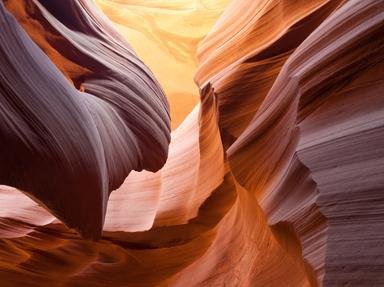Quiz Answer Key and Fun Facts
1. Some rounded pebbles were having a merry time near the river when they got immersed in the water. They reached the sea and were deposited under other substances (sediments). However, when they were discovered, they were no longer pebbles, but a single rock. One confused pebble asked, "What have we become, guys?"
2. Some granites were enjoying life when an earthquake occurred and buried them underground. Centuries later, they were brought up. One saw his reflection in the river and was shocked. What had he become?
3. There was a great forest...
Trees abounded in it...
A disaster occurred and they were buried.
When they were finally discovered, a tree shrieked: "No way. Why do I look so black and rock like? What have I become?"
4. A basalt was chatting with some mica and a ball of clay when a volcanic eruption occurred and buried them. When they reappeared on surface, they were all the same kind of rock! Obviously, they were delighted, but what had they become?
5. A coal was contemplating on life when it was buried underground by a tectonic movement. Like the other substances, he too was discovered centuries later and he sighed, realizing that he was no longer coal, but a black substance found on the ends of a writing equipment. What had he become?
6. Two rocks were chatting about their ancestry. One said, "I was merely some grains of sand previously. But, you know, the lime present near me converted me to this state." The other rock stated, "My story is similar to yours, but I remember that I was born in a desert." Whoa! they were actually the same kind of rock, but what had they become?
7. That limestone was unlucky to get caught in the middle of another earthquake. Yet, it helped its crystals to become larger and more uniform. Soon, it was carried away for construction of the Taj Mahal. What had he become?
8. Like other characters in this quiz, bad luck followed this sandstone. Exposed to heat, pressure and orogenic movements, it was welded by silica and metamorphosed into an angular and very resistant rock used commonly in the construction of railways. What had he become?
9. How did it happen? The ___ wondered. We were only some particles of clay and mud earlier, and now we are ___. What had they become?
10. Talcum powder is obtained from talc, right? But other things are derived from talc too. What does talc become after metamorphism?
Source: Author
remote9
This quiz was reviewed by FunTrivia editor
WesleyCrusher before going online.
Any errors found in FunTrivia content are routinely corrected through our feedback system.

